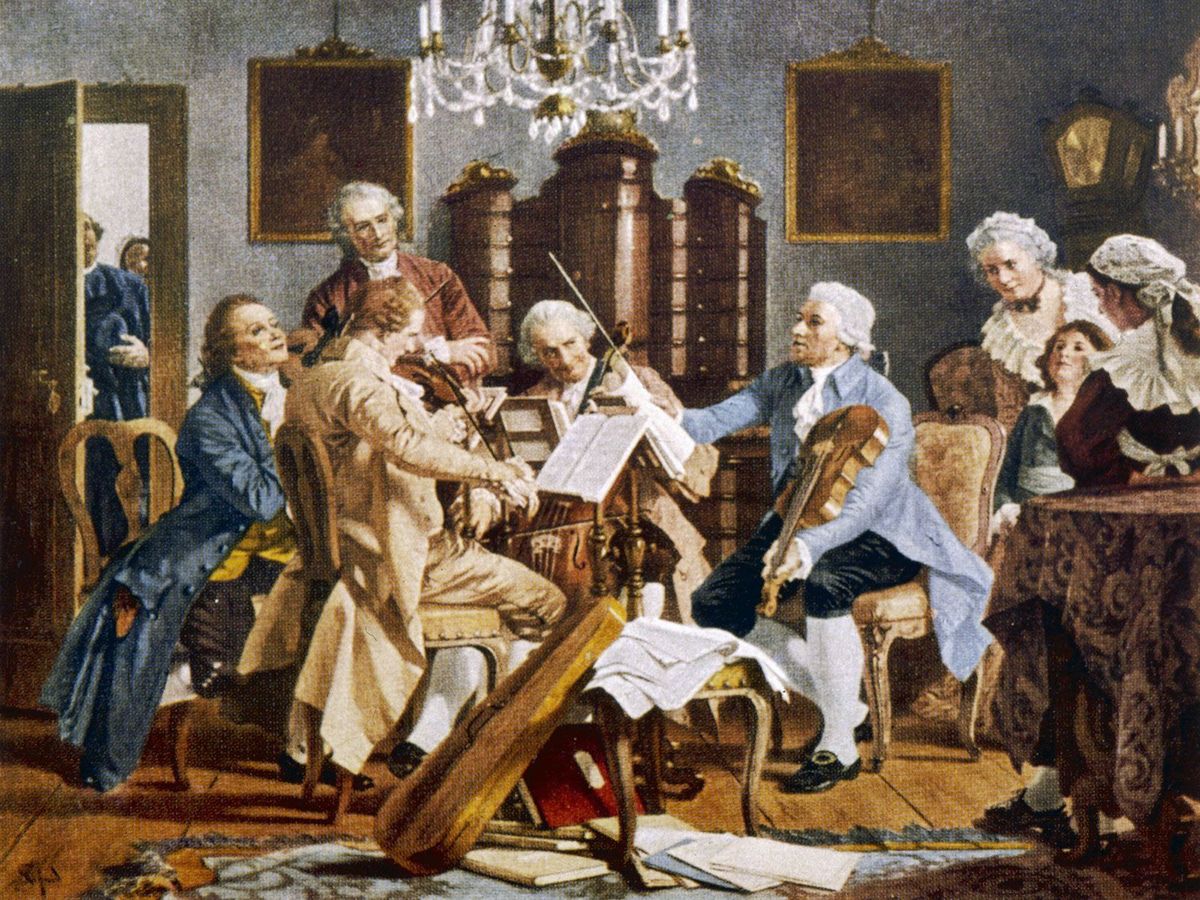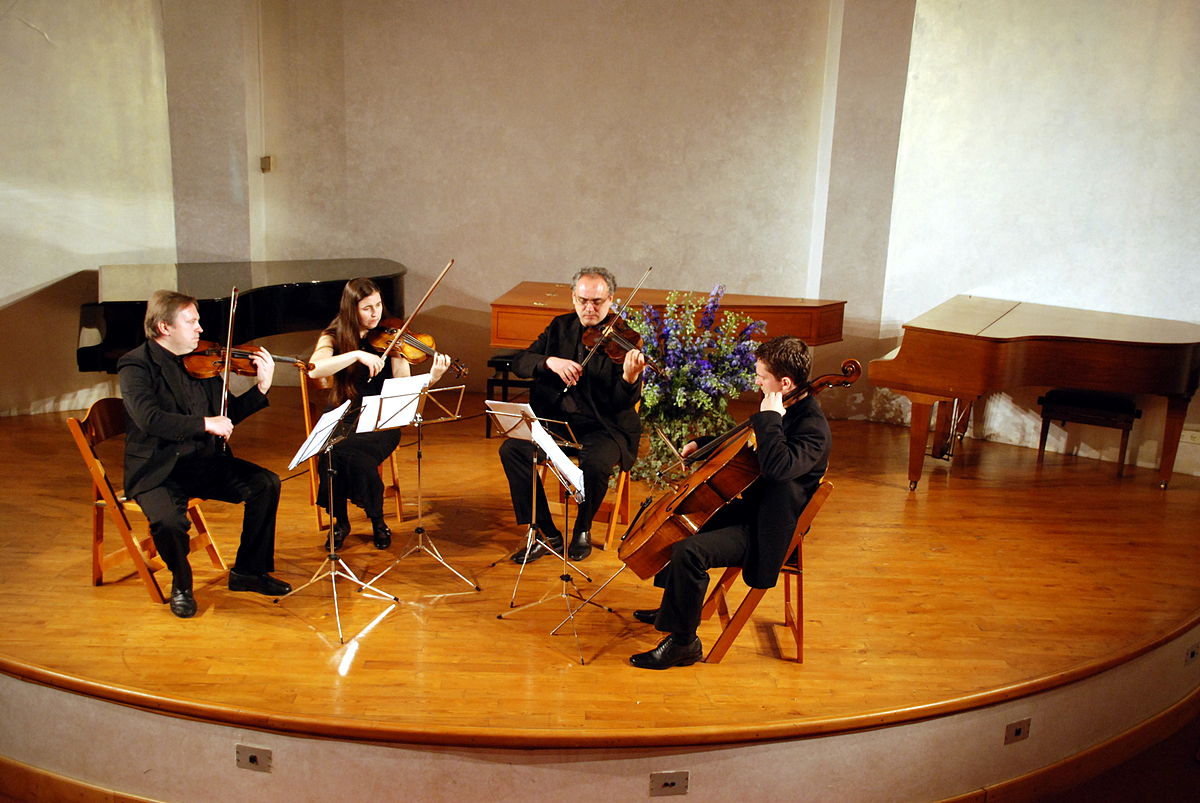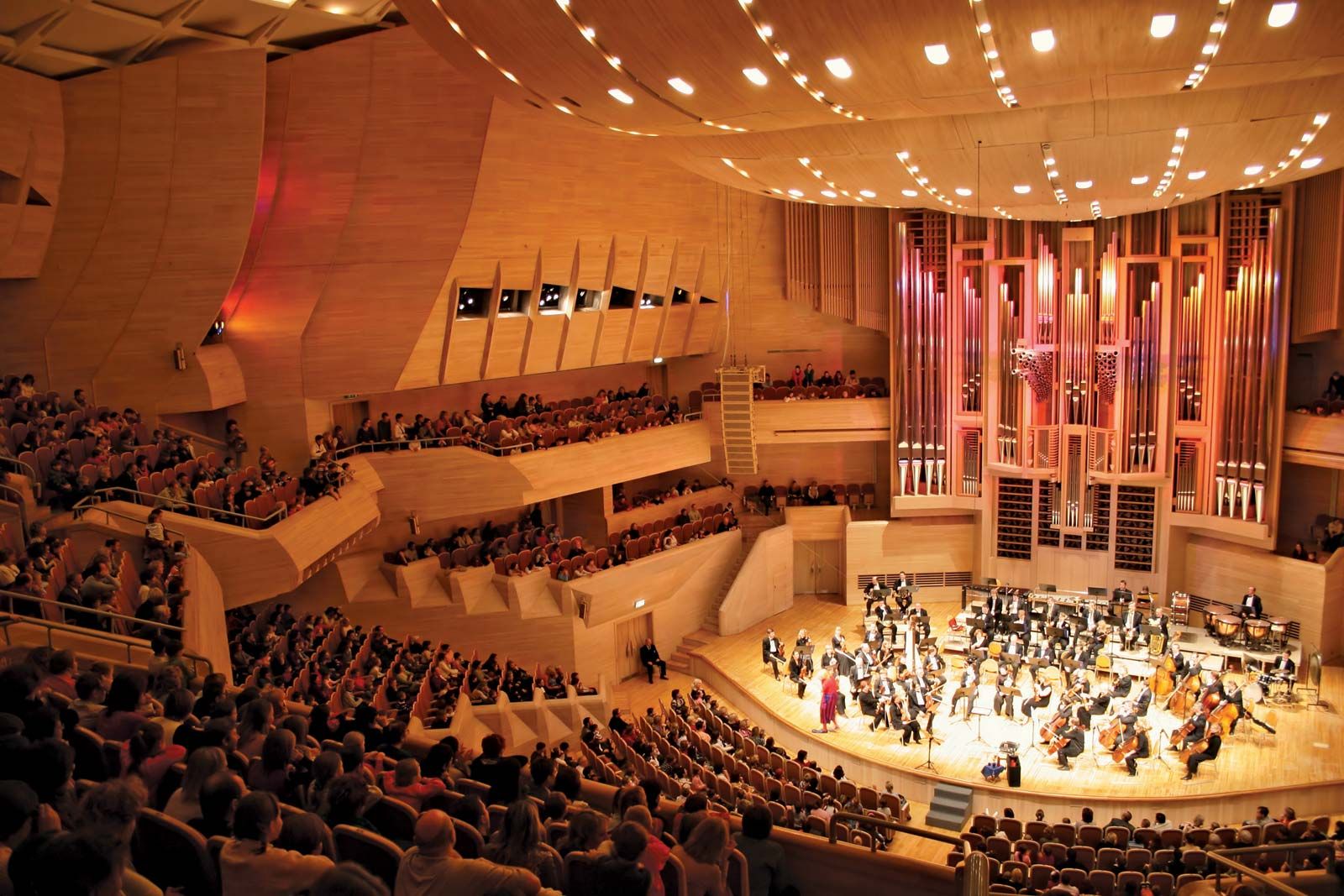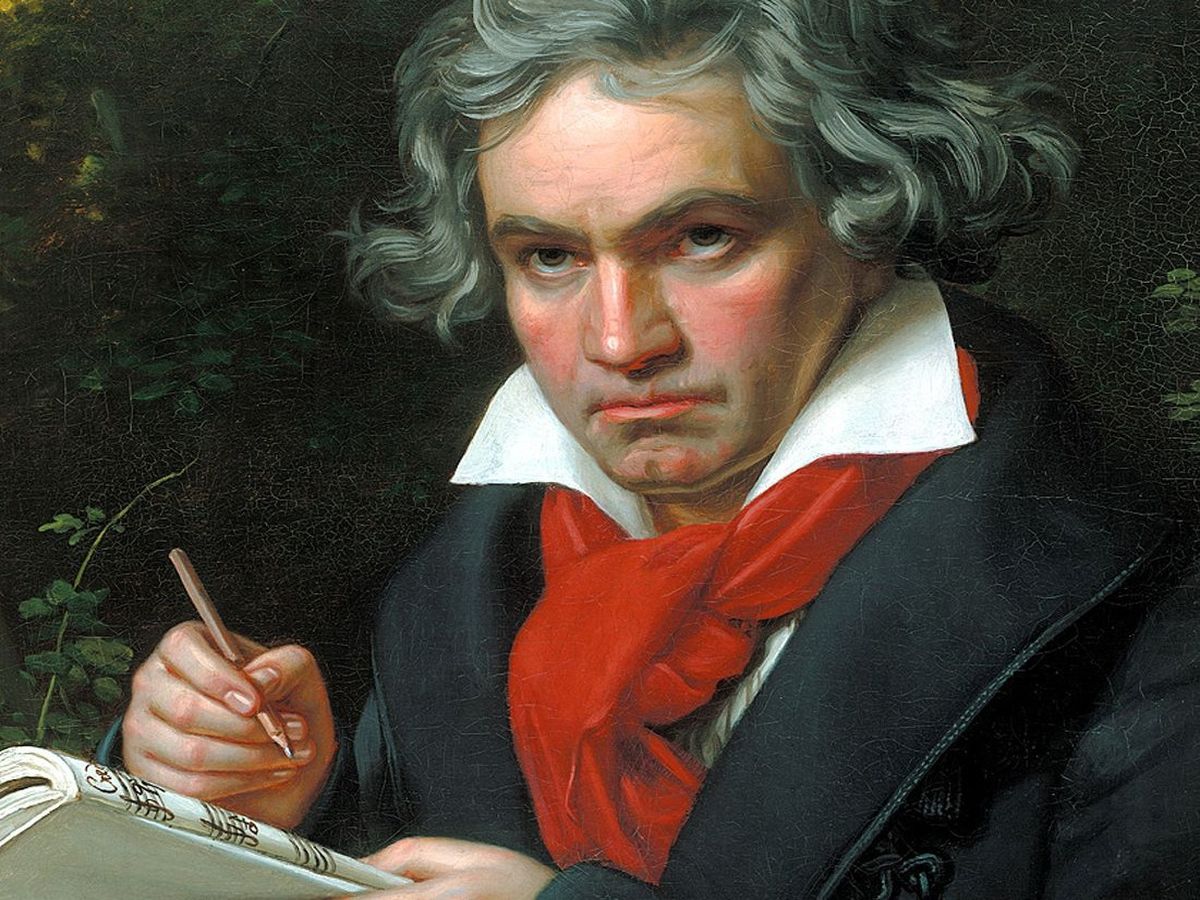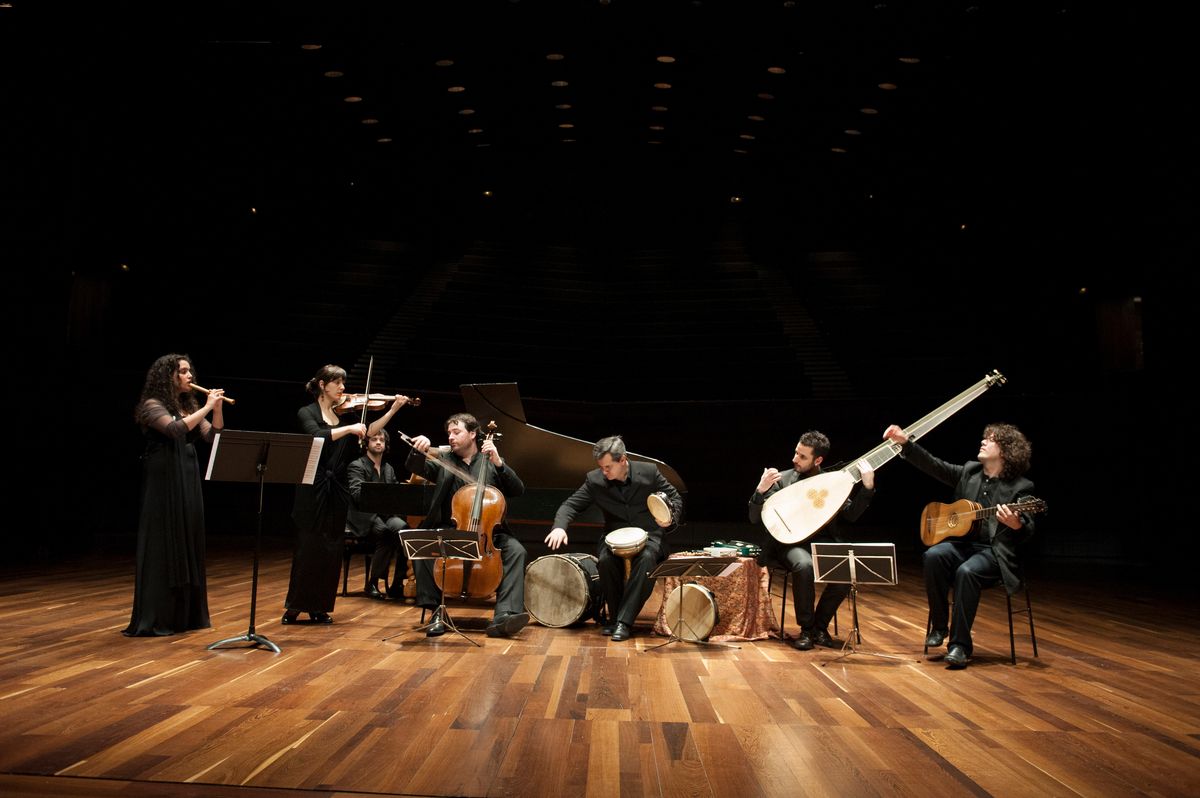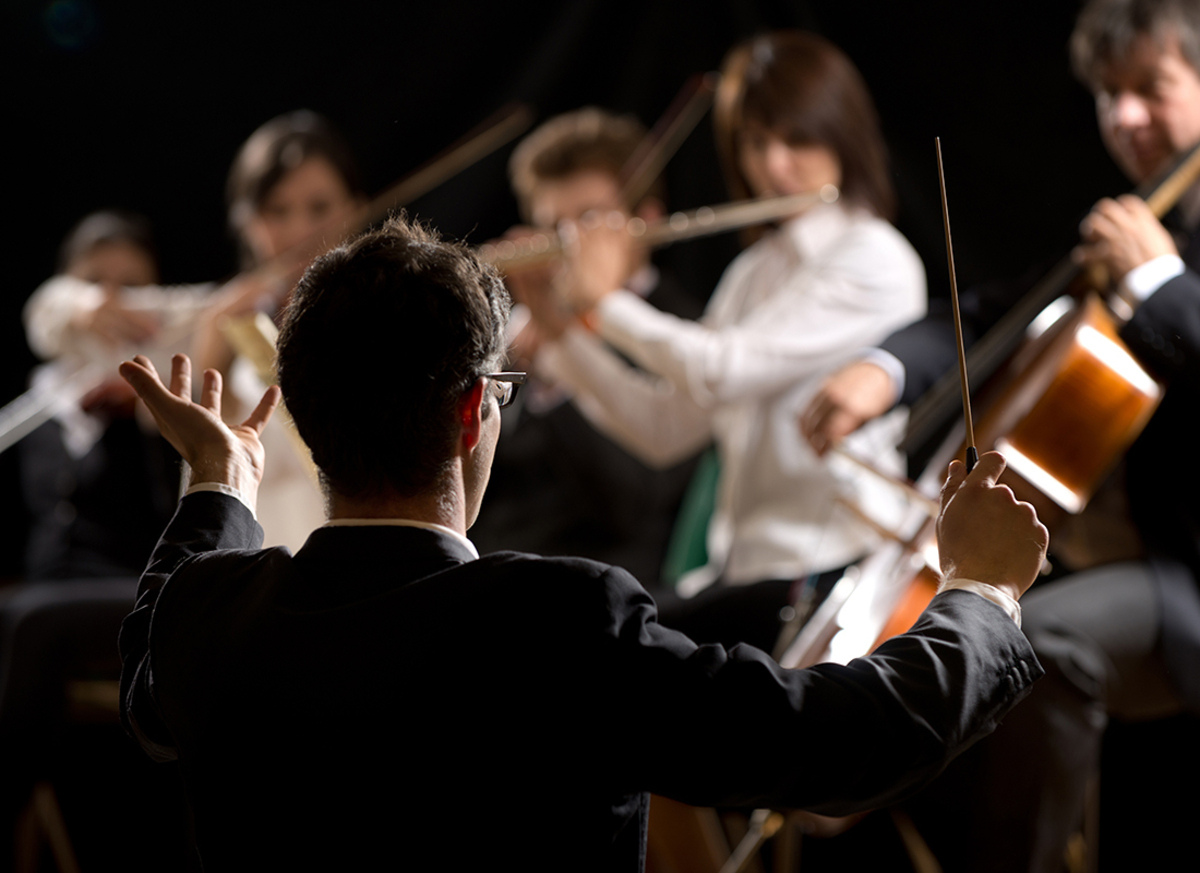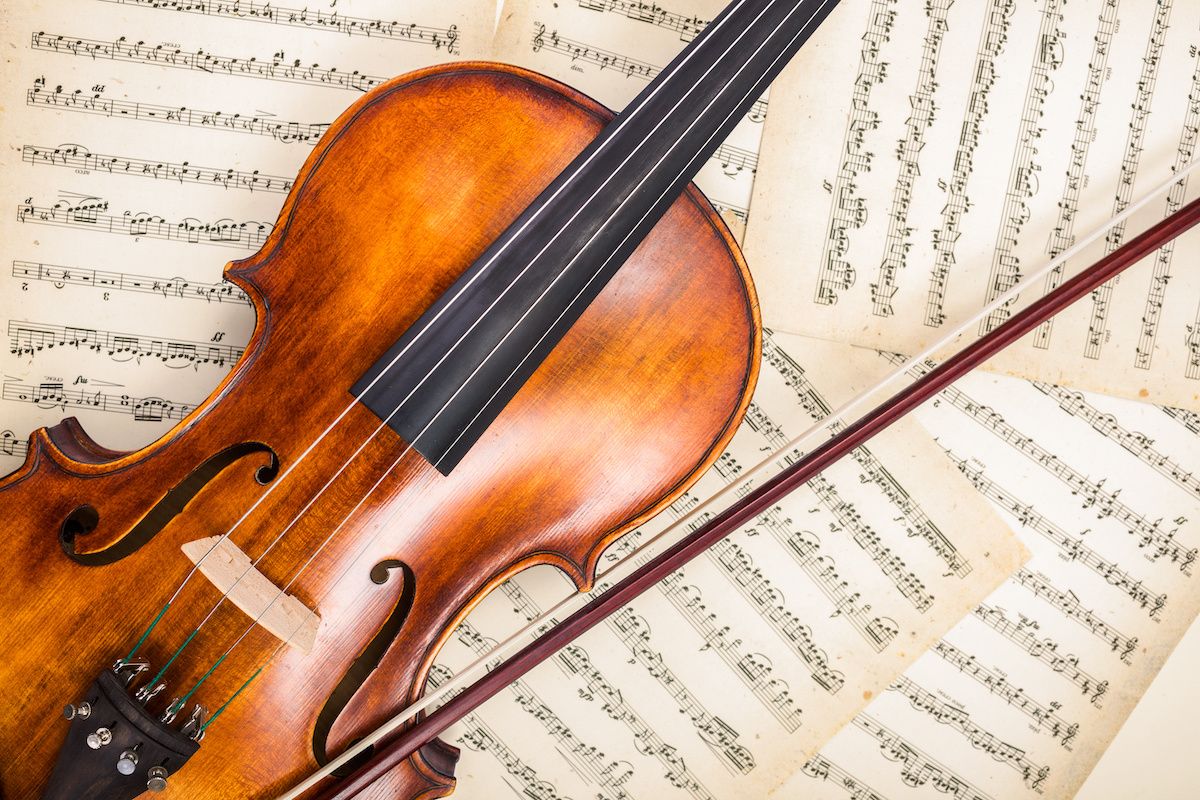Home>Production & Technology>Orchestra>What Did The Typical Orchestra Of The Classical Period Consist Of?


Orchestra
What Did The Typical Orchestra Of The Classical Period Consist Of?
Published: February 24, 2024
Discover the typical orchestra setup during the classical period, including the instruments and structure. Learn about the essential components of a classical orchestra.
(Many of the links in this article redirect to a specific reviewed product. Your purchase of these products through affiliate links helps to generate commission for AudioLover.com, at no extra cost. Learn more)
Table of Contents
Introduction
During the Classical Period, which spanned roughly from 1730 to 1820, orchestral music flourished, and the typical orchestra of this era was characterized by a distinct arrangement of instruments. The composition of the orchestra during this period laid the foundation for the modern symphony orchestra, influencing the development of orchestral music for centuries to come.
The Classical Period was marked by a shift in musical style, with a focus on clarity, balance, and structure. Composers of this era, including luminaries such as Mozart, Haydn, and Beethoven, crafted symphonies, concertos, and chamber music that showcased the unique capabilities of the orchestra. Understanding the makeup of the typical orchestra of the Classical Period provides valuable insights into the musical landscape of the time and the rich tapestry of sounds that defined this period.
In this article, we will delve into the components of the typical orchestra of the Classical Period, exploring the string, woodwind, brass, and percussion sections that contributed to the orchestral brilliance of the era. By gaining a deeper understanding of the instruments that comprised these sections, we can appreciate the intricate interplay of sounds that characterized the music of the Classical Period and continues to captivate audiences today.
The String Section
The string section formed the foundation of the Classical Period orchestra, providing richness, depth, and melodic beauty to the ensemble. Comprising the violin, viola, cello, and double bass, the string section played a pivotal role in shaping the orchestral sound of the era.
Violin
The violin, often referred to as the "queen of instruments," held a prominent position in the string section. Its agile and expressive nature allowed composers to craft intricate melodies and soaring passages, adding emotional depth to orchestral compositions. The first violin section, led by the concertmaster, carried the melodic weight of the orchestra, while the second violin section provided harmonic support, creating a lush sonic backdrop.
Viola
The viola, slightly larger than the violin and possessing a warm, mellow timbre, contributed a rich middle voice to the string section. Its expressive capabilities added a distinctive color to the orchestral palette, enhancing the harmonic texture and providing counterpoint to the higher-pitched violins and the lower-pitched instruments.
Cello
The cello, with its deep, sonorous tones and expressive range, lent a sense of gravitas to the orchestra. Capable of producing both lyrical melodies and robust bass lines, the cello served as a versatile anchor within the string section, imparting emotional depth and rhythmic vitality to orchestral compositions.
Double Bass
The double bass, the largest and lowest-pitched member of the string section, provided essential harmonic support and rhythmic foundation. Its resonant, earthy tones added weight and depth to the orchestra's sound, anchoring the ensemble and reinforcing the bass line with its powerful presence.
The collective synergy of the string section, with its interwoven melodies, lush harmonies, and rhythmic underpinnings, formed the backbone of the Classical Period orchestra. Composers skillfully exploited the expressive capabilities of each string instrument, crafting symphonies and concertos that showcased the full spectrum of the string section's sonic prowess.
As we continue our exploration of the Classical Period orchestra, we will delve into the woodwind section, uncovering the distinctive timbres and expressive potential of these captivating instruments.
The Woodwind Section
The woodwind section of the Classical Period orchestra introduced a diverse array of instruments, each contributing unique tonal colors and expressive capabilities to the ensemble. Comprising flutes, oboes, clarinets, and bassoons, the woodwind section played a pivotal role in shaping the orchestral sound of the era.
Flutes
The flute, known for its shimmering and agile qualities, added a radiant brilliance to the orchestral palette. With its ethereal high register and nimble articulation, the flute brought a sense of airiness and grace to orchestral compositions. Composers harnessed the flute's evocative timbre to craft delicate melodies, sparkling trills, and virtuosic passages that danced above the orchestral tapestry.
Oboes
The oboe, with its distinctive reedy timbre and expressive range, imparted a sense of poignancy and depth to orchestral music. As one of the most prominent woodwind instruments of the era, the oboe often carried melodic lines, evoking a sense of melancholy or introspection. Its piercing yet soulful sound added a layer of emotional richness to the orchestra, creating poignant moments of musical storytelling.
Clarinets
The clarinet, a relatively new addition to the orchestra during the Classical Period, brought a mellower and velvety timbre to the woodwind section. Its rich, dark tones and seamless legato phrasing expanded the tonal palette of the orchestra, offering composers a broader spectrum of expressive possibilities. The clarinet's ability to evoke warmth, nostalgia, and lyrical beauty enriched the orchestral texture, contributing to the evolving sonic landscape of the era.
Bassoons
The bassoon, with its deep, resonant voice and agile articulation, provided a robust foundation to the woodwind section. Often entrusted with bass lines and contrapuntal passages, the bassoon added a sense of gravity and rhythmic vitality to orchestral compositions. Its expressive capabilities, ranging from playful and whimsical to solemn and majestic, endowed the orchestra with a dynamic and versatile sonic character.
The woodwind section, with its diverse array of timbres and expressive nuances, played a pivotal role in shaping the orchestral sound of the Classical Period. Composers skillfully integrated the woodwind instruments, harnessing their individual strengths to create symphonies, concertos, and chamber music that showcased the full spectrum of the woodwind section's sonic prowess.
As we continue our exploration of the Classical Period orchestra, we will delve into the brass section, uncovering the majestic tones and regal grandeur of these commanding instruments.
The Brass Section
The brass section of the Classical Period orchestra embodied grandeur, power, and regal splendor, adding a majestic and triumphant quality to orchestral compositions. Comprising trumpets, horns, trombones, and occasionally the timpani, the brass section played a pivotal role in shaping the dynamic and resplendent sound of the era.
Trumpets
The trumpets, with their brilliant and penetrating sound, commanded attention within the orchestra. Their clarion calls and triumphant fanfares elevated ceremonial and celebratory passages, infusing compositions with a sense of grandeur and exuberance. The piercing brilliance of the trumpets cut through the orchestral texture, adding a resplendent and majestic quality to the music of the Classical Period.
Horns
The horns, renowned for their rich, warm timbre and evocative lyricism, imparted a sense of nobility and grandeur to orchestral music. Whether evoking pastoral serenity or summoning heroic valor, the horns contributed lush harmonies and stirring melodies to the ensemble. Their majestic and sonorous tones resonated with regal elegance, enriching orchestral compositions with a sense of timeless grandeur.
Trombones
The trombones, with their bold and commanding presence, added a robust and sonorous foundation to the brass section. Capable of evoking solemnity, power, and gravitas, the trombones lent a majestic and imposing quality to orchestral passages. Their resonant and imposing sound elevated the orchestral texture, imbuing compositions with a sense of awe-inspiring grandeur and solemnity.
Timpani
The timpani, although technically a percussion instrument, often collaborated closely with the brass section, adding rhythmic propulsion and dramatic impact to orchestral works. Its thunderous rolls, dramatic accents, and commanding presence heightened climactic moments, infusing compositions with a sense of grandeur and exhilaration. The timpani's powerful and resonant strokes reverberated through the orchestra, underscoring the regal and triumphant character of the brass section.
The brass section, with its commanding presence, regal splendor, and triumphant fanfares, played a pivotal role in shaping the orchestral sound of the Classical Period. Composers deftly harnessed the expressive capabilities of the brass instruments, crafting symphonies, concertos, and ceremonial music that exuded grandeur, power, and majesty, leaving an indelible mark on the musical landscape of the era.
As we continue our exploration of the Classical Period orchestra, we will delve into the percussion section, uncovering the rhythmic vitality and dramatic impact of these dynamic instruments.
The Percussion Section
The percussion section of the Classical Period orchestra wielded a diverse array of instruments, each contributing rhythmic vitality, dramatic impact, and dynamic flair to orchestral compositions. While the percussion section of this era was not as expansive as modern orchestras, it played a crucial role in shaping the overall sonic landscape, adding color, texture, and rhythmic propulsion to the ensemble.
Timpani
The timpani, often referred to as kettledrums, stood as the centerpiece of the Classical Period percussion section. With their resonant and thunderous tones, the timpani imparted a sense of grandeur and dramatic impact to orchestral works. Composers skillfully integrated the timpani, utilizing its commanding presence to punctuate climactic moments, heighten rhythmic drive, and underscore the orchestral texture with its powerful and majestic strokes.
Other Percussion Instruments
In addition to the timpani, the Classical Period orchestra occasionally incorporated other percussion instruments such as cymbals, triangle, and snare drum to add color and dramatic flair to compositions. The shimmering resonance of the cymbals, the delicate sparkle of the triangle, and the crisp, rhythmic articulation of the snare drum enriched orchestral passages, infusing them with a sense of exuberance, excitement, and rhythmic complexity.
Role in Orchestral Compositions
The percussion section, though modest in size compared to contemporary orchestras, played a crucial role in enhancing the rhythmic drive, dramatic impact, and dynamic contrast within orchestral compositions. Whether accentuating climactic moments, adding a touch of ceremonial grandeur, or infusing passages with rhythmic energy, the percussion instruments of the Classical Period orchestra contributed to the overall sonic tapestry, enriching the orchestral sound with their vibrant and evocative timbres.
Legacy
The influence of the Classical Period percussion section reverberates through the centuries, shaping the role of percussion in orchestral music. While the instrumentation and repertoire have evolved, the foundational contributions of the timpani and other percussion instruments during this era laid the groundwork for the expressive and indispensable role of percussion in orchestral compositions to come.
As we reflect on the vibrant and dynamic contributions of the percussion section to the Classical Period orchestra, we gain a deeper appreciation for the rhythmic vitality and dramatic impact that these instruments brought to the orchestral landscape of the time.
Conclusion
In conclusion, the typical orchestra of the Classical Period was a marvel of musical ingenuity, comprising a carefully balanced ensemble of string, woodwind, brass, and percussion instruments. This meticulously crafted orchestral configuration laid the groundwork for the symphony orchestra as we know it today, shaping the rich tapestry of orchestral music for centuries to come.
The string section, with its interwoven melodies, lush harmonies, and rhythmic underpinnings, formed the backbone of the Classical Period orchestra. The expressive capabilities of the violin, viola, cello, and double bass brought emotional depth and melodic beauty to orchestral compositions, serving as the cornerstone of the ensemble's sonic identity.
The woodwind section introduced a diverse array of instruments, each contributing unique tonal colors and expressive nuances to the orchestra. From the shimmering brilliance of the flute to the noble resonance of the horn, the woodwinds enriched orchestral music with their evocative timbres, expanding the sonic palette and infusing compositions with expressive depth.
The brass section embodied grandeur, power, and regal splendor, adding a majestic and triumphant quality to orchestral compositions. The regal fanfares of the trumpets, the noble lyricism of the horns, and the commanding presence of the trombones elevated orchestral passages, infusing them with a sense of timeless grandeur and majesty.
The percussion section, though modest in size, played a crucial role in shaping the rhythmic vitality and dramatic impact of orchestral compositions. The resonant thunder of the timpani and the vibrant accents of other percussion instruments added color, texture, and rhythmic propulsion to the ensemble, enriching the orchestral sound with their dynamic flair.
As we reflect on the vibrant and dynamic contributions of each orchestral section, we gain a deeper appreciation for the intricate interplay of sounds that defined the music of the Classical Period. The meticulous arrangement of instruments, the innovative orchestration techniques, and the expressive capabilities of each section collectively shaped the orchestral brilliance of the era, leaving an indelible mark on the history of music.
The legacy of the Classical Period orchestra endures, serving as a testament to the enduring power and beauty of orchestral music. By understanding the makeup of the typical orchestra of this era, we gain valuable insights into the evolution of orchestral music and the enduring impact of the Classical Period on the symphonic tradition.

